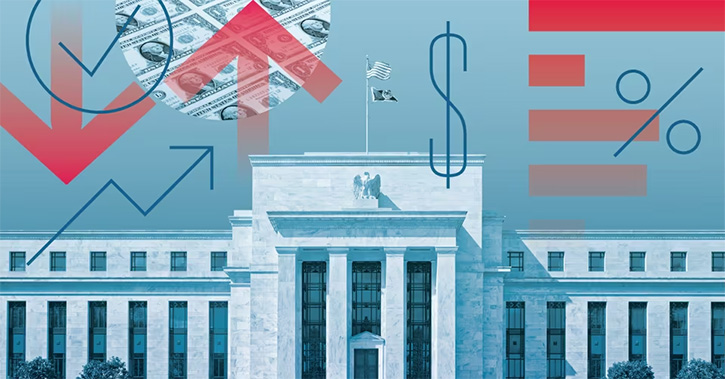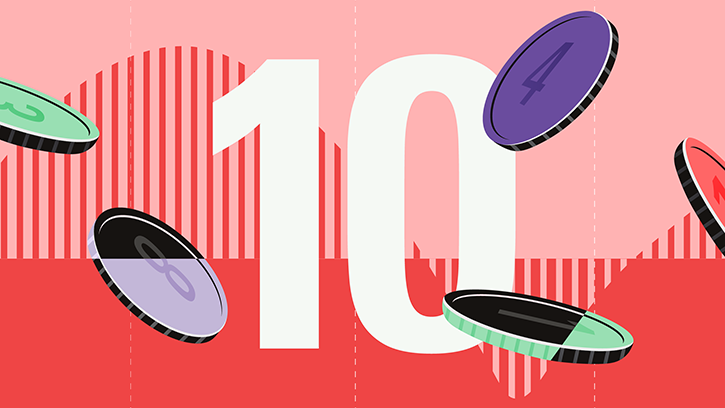
It seems like it’s no longer a question as to whether the US Federal Reserve will cut interest rates this coming week, but instead by how much. Will the central bank make a measured quarter-point cut or a more aggressive half-point one?
It may not seem like a significant difference, but the devil is in the details when it comes to the Fed’s messaging around how confident it is about an improved inflation outlook, as well as how concerned it is about the health of the economy. The signals the central bank sends when it announces its decision Wednesday afternoon could shape how markets move in the coming weeks and months.
The Fed’s federal-funds interest rate target now sits at a range of 5.25%-5.50% — a level generally seen as restrictive for the economy. Investors and analysts widely agree that a September cut is coming, as the Fed looks to make interest rates neither stimulative nor restrictive. But given recent evidence of the labor market cooling more than expected, observers are divided on how fast those cuts will come, and how deep they’ll be.
As of Friday, markets are leaning toward the Fed going with the small quarter-point cut, followed by additional decreases throughout the rest of the year and into 2025. “How fast do you want to get there? That’s the debate,” says Don Rissmiller, chief economist at Strategas. While the Fed’s default move would normally consist of regular cuts in shallow increments, he explains, evidence of cracks in the jobs market changed the picture for investors last week.
Bearish Jobs Reports Sow Fear of Economic Slowdown
With inflationary pressures finally easing after two years, central bankers have been preparing for months to loosen policy for the first time since the onset of the pandemic. The conversation took on a new urgency in July and August, when data showing that the US economy created fewer jobs than expected sparked fears among some investors that overly tight monetary policy had damaged the labor market.
For investors, there’s a big difference between the Fed steering the economy toward a comfortable soft landing and reacting to the threat of a recession. If officials are concerned the economy could see a downturn, they’re more likely to slash rates quicker and deeper.
Why Would the Fed Cut Rates by 50 Basis Points?
As investors wondered whether the Fed had damaged the labor market by waiting too long to ease policy, speculation about a 50-basis-point rate cut gained steam.
Some market watchers argue that the central bank has already waited too long and should start cutting rates aggressively to keep the jobs market from entering more dangerous territory. “When you start to see small cracks, they can turn into big cracks if you don’t do anything different,” Rissmiller explains. He thinks the Fed should and will opt for the 50-basis-point cut. “I think they are behind the curve here,” he says, though he notes the decision will ultimately be a “close call,” since the FOMC wasn’t on board with the move before the September meeting blackout period began. He believes Fed Chair Jerome Powell should lead the charge for a larger cut.
Rissmiller thinks there’s also a case to be made for “frontloading” cuts. With policy at such a restrictive level, the Fed has lots of room to maneuver. The central bank “has the most ability to move in larger increments now and not overshoot,” he says. Larger policy moves down the line are more risky because Fed policy shows up in the economy with a lag, and would make it easier for the Fed to overcorrect and take rates too low. He also thinks a larger rate cut now would protect the economy if the labor market is even weaker than it seems—which is possible, given the recent trend of downward revisions to employment data.
Risks of a 50-Basis-Point Cut
A larger rate cut to kick off the Fed’s easing cycle would also come with risks, especially since financial markets are extremely sensitive to any perceived guidance from the central bank. “If the Fed were to cut by 50 bp in September, we think markets would take that as an admission that it is behind the curve,” Bank of America analysts wrote in a research note last week.
Markets wouldn’t be out of line to worry. Data recently analyzed by UBS shows that since 1987, every 50-basis-point rate cut has preceded a recession. But their economists note that those cuts have coincided with much more economic weakness than they see today, and they argue that means the bar for a 50-basis-point cut remains fairly high.
Rissmiller isn’t as worried about the messaging to the market: “The Fed has a lot of tools for communication. There’ll be a press conference, so I think it’s a minor risk.” He thinks the risk of a market reaction shouldn’t dissuade Fed officials from a larger cut “if they conclude that’s the right thing to do.”
Investors Lean Toward a 25-Basis-Point Cut
Expectations for the scope of the first cut have been inconsistent as traders struggle to digest mixed economic data. A month ago, bond traders saw a 53% chance that the Fed would reduce rates by 50 basis points, according to the CME FedWatch Tool. A week ago, that probability fell to 30%, and then even lower after a mostly positive August inflation report.
As of midday Friday, bond market futures were pricing in a 45% chance of a larger cut and a 55% chance of a smaller cut.
Larger Cuts Could Come Later
Even if the Fed opts for a quarter-point rate cut at its upcoming meeting, analysts say the door is still open for larger reductions later this year. The Fed has emphasized repeatedly that it will take ongoing economic data into account when setting policy rather than following a prescribed path, and analysts expect it to maintain that stance.
“The broad measures we look at for the labor market suggests that there’s a real possibility that the Fed may quicken the pace of the rate cuts in November or December,” says Kathy Bostjancic, chief economist for Nationwide Mutual.
Reacting to recent comments from Fed officials, Goldman Sachs economists say they expect a 25-basis-point reduction at the September meeting. However, they add that Fed leadership appears to be “open to 50 bp cuts at subsequent meetings if the labor market continues to deteriorate.”
Investors Should Keep the Long Term in Mind but Prepare for Opportunities
Amid all this uncertainty, Scott Wren, senior global equity strategist for the Wells Fargo Investment Institute, says long-term investors shouldn’t get too hung up on the details. “For retail investors who are trying to build wealth over time, the important thing is that the Fed’s going to start a series of cuts,” he says. “A quarter-point here or there is like splitting hairs. The important thing is that rates are coming down.”
Wren expects the Fed’s easier policy to boost economic growth but cautions that markets could be choppy in the shorter term as investors adjust to a new cycle. That could present a near-term opportunity for investors with cash on the sidelines. “As hard as it is for retail investors, they should welcome these pullbacks if their timeframe is three-plus, five-plus years, because then they can buy stocks when they’re when they’re down,” he says.



























